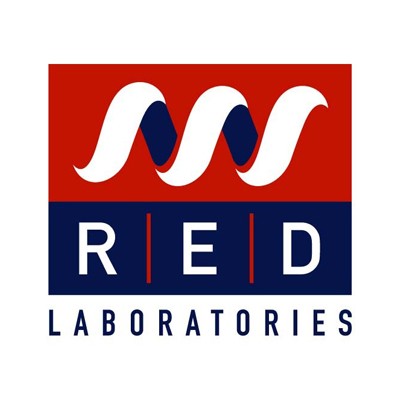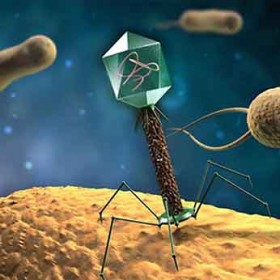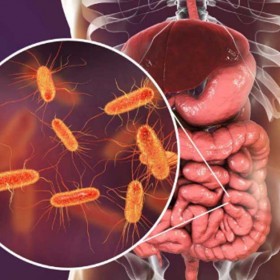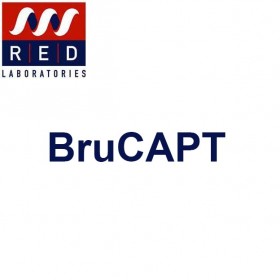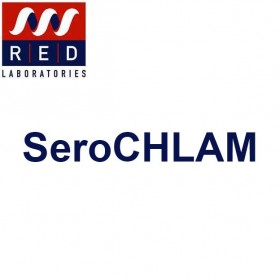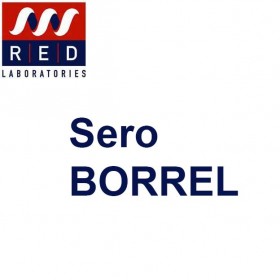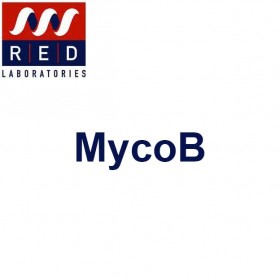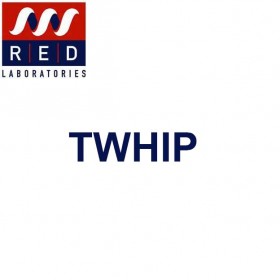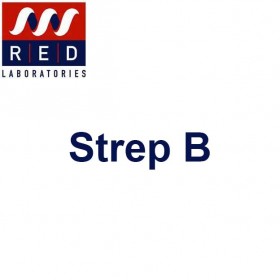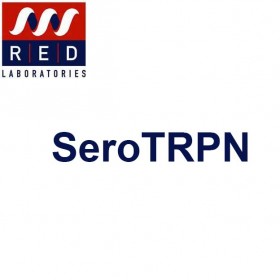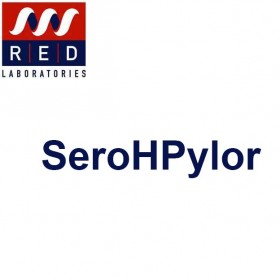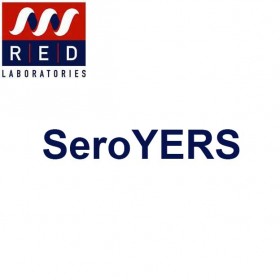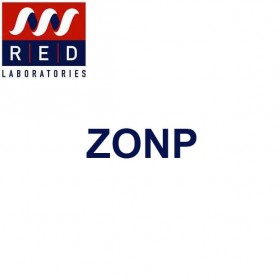Infections bactériennes
Il y a 30 produits.
Sérologie de Brucella (BruCAPT)
BruCAPT: Request Form from EU
BruCAPT: Request Form from USA
SEROLOGIE : Echantillons requis: 2 ml sérum. Stable pendant 24h à température ambiante, 7 jours à 4°C. Périodes plus longues: centrifuger, aliquoter , congeler. IMMUNOASSAYS
BruCAPT: Request Form from USA
SEROLOGIE : Echantillons requis: 2 ml sérum. Stable pendant 24h à température ambiante, 7 jours à 4°C. Périodes plus longues: centrifuger, aliquoter , congeler. IMMUNOASSAYS
Chlamydias IgG & IgA immunoblot (SeroCHLAM)
Chlamydias IgG & IgA immunoblot (SeroCHLAM) Chlamydia pneumoniae, Chlamydia trachomatis, Chlamydia psittaci
SeroCHLAM: Request Form from EU
SeroCHLAM: Request Form from USA
SEROLOGIE : Echantillons requis: 2 ml sérum. Stable pendant 24h à température ambiante, 7 jours à 4°C. Périodes plus longues: centrifuger, aliquoter , congeler. IMMUNOBLOTS (WESTERN BLOTS) AVEC LE DIAGRAMME
SeroCHLAM: Request Form from EU
SeroCHLAM: Request Form from USA
SEROLOGIE : Echantillons requis: 2 ml sérum. Stable pendant 24h à température ambiante, 7 jours à 4°C. Périodes plus longues: centrifuger, aliquoter , congeler. IMMUNOBLOTS (WESTERN BLOTS) AVEC LE DIAGRAMME
Borrelia IgG & IgM immunoblot (SeroBORREL)
Borrelia IgG & IgM immunoblot (SeroBORREL) Borrelia burgdorferi ss, B. afzelii, B. gariniii, B. spielmanii, B.bavariensi
SeroBorrel: Request Form from EU
SeroBorrel: Request Form from USA
SEROLOGIE : Echantillons requis: 2 ml sérum. Stable pendant 24h à température ambiante, 7 jours à 4°C. Périodes plus longues: centrifuger, aliquoter , congeler. IMMUNOBLOTS (WESTERN BLOTS) AVEC LE DIAGRAMME
SeroBorrel: Request Form from EU
SeroBorrel: Request Form from USA
SEROLOGIE : Echantillons requis: 2 ml sérum. Stable pendant 24h à température ambiante, 7 jours à 4°C. Périodes plus longues: centrifuger, aliquoter , congeler. IMMUNOBLOTS (WESTERN BLOTS) AVEC LE DIAGRAMME
Mycobacterium QuantiFeron GOLD test (MycoB)
Mycobacterium QuantiFeron GOLD test: detects responses in vitro to mycobacterium infection by measuring IFN-γ response to either ESAT-6 or CFP-10 antigens
MycoB: Request Form from EU
MycoB: Request Form from USA
Utilisation de tubes spéciaux; envoi sur demande. Les tubes doivent être placés à 37°C pendant 16-24h juste après la prise de sang
MycoB: Request Form from EU
MycoB: Request Form from USA
Utilisation de tubes spéciaux; envoi sur demande. Les tubes doivent être placés à 37°C pendant 16-24h juste après la prise de sang
PCR Tropheryma whipplei (TWHIP)
TWHIP: Request Form from EU
TWHIP: Request Form from USA
Echantillon requis: Sang: 2 ml sang complet en tube EDTA. Stable pendant 24 heures. Pour des périodes plus longues conserver à –20°C ou –80°C
TWHIP: Request Form from USA
Echantillon requis: Sang: 2 ml sang complet en tube EDTA. Stable pendant 24 heures. Pour des périodes plus longues conserver à –20°C ou –80°C
PCR Streptococcus agalactiae (Strep B)
Strep: Request Form from EU
Strep: Request Form from USA
Echantillon requis: Sang: 2 ml sang complet en tube EDTA. Stable pendant 24 heures. Pour des périodes plus longues conserver à –20°C ou –80°C
Strep: Request Form from USA
Echantillon requis: Sang: 2 ml sang complet en tube EDTA. Stable pendant 24 heures. Pour des périodes plus longues conserver à –20°C ou –80°C
Treponema IgG & IgM mmunoblot (SeroTRPN)
SeroTRPN: Request Form from EU
SeroTRPN: Request Form from USA
SEROLOGIE : Echantillons requis: 2 ml sérum. Stable pendant 24h à température ambiante, 7 jours à 4°C. Périodes plus longues: centrifuger, aliquoter , congeler. IMMUNOBLOTS (WESTERN BLOTS) AVEC LE DIAGRAMME
SeroTRPN: Request Form from USA
SEROLOGIE : Echantillons requis: 2 ml sérum. Stable pendant 24h à température ambiante, 7 jours à 4°C. Périodes plus longues: centrifuger, aliquoter , congeler. IMMUNOBLOTS (WESTERN BLOTS) AVEC LE DIAGRAMME
PCR Hybrispot Zoonoses (HybZOO)
Extraction de tiques + PCR mutiplex + dotblot pour 7 pathogens : Erhlichia, Anaplasma, Bartonella, Borrelia burgdorferi sl, Rickettsias (Richettsia, groupe de la fièvre tachetée & groupe du typhus), Coxiella, Francisella
HybZOO: Request Form from EU
HybZOO: Request Form from USA
Echantillon requis: sang, salive, frottis, selon les besoins Sang: 1 tube EDTA. Stable pendant 72 heures. Pour des périodes plus longues conserver à -20°C ou -80°C. Salive , biopsies et frottis: échantillon dans un tube stérile, sec (pas de tampon ni de fixateur). Stable pendant 24h. Pour des périodes plus longues congeler à -20°C.
HybZOO: Request Form from EU
HybZOO: Request Form from USA
Echantillon requis: sang, salive, frottis, selon les besoins Sang: 1 tube EDTA. Stable pendant 72 heures. Pour des périodes plus longues conserver à -20°C ou -80°C. Salive , biopsies et frottis: échantillon dans un tube stérile, sec (pas de tampon ni de fixateur). Stable pendant 24h. Pour des périodes plus longues congeler à -20°C.
Phage Rickettsia qPCR (PhRick)
TEST PHAGE PHELIX : Une méthode révolutionnaire pour détecter les bactéries intracellulaires, et une réponse aux malades sans diagnostic.Les phages appartiennent à la forme de vie la plus simple et la plus primitive (les virus). Ils sont extraordinairement spécifiques de l'hôte bactérien qu'ils infectent pour se propager. Ils peuvent infecter rapidement leur hôte et y insérer son matériel génétique. En conséquence, ils produisent un grand nombre de copies qui peuvent infecter davantage (et dans certains cas spécifiques décimer) la bactérie à l'origine de l'infection. Plus important encore, les bactériophages peuvent avoir une capacité de destruction. Lire la suite
Presentation
PhRick: Request form EU
PhRick: Request form from USA
FR – Les testes
Helicobacter pylori IgG & IgA immunoblot (SeroHPylor)
SeroHPylor: Request Form from EU
SeroHPylor: Request Form from USA
SEROLOGIE : Echantillons requis: 2 ml sérum. Stable pendant 24h à température ambiante, 7 jours à 4°C. Périodes plus longues: centrifuger, aliquoter , congeler. IMMUNOBLOTS (WESTERN BLOTS) AVEC LE DIAGRAMME
SeroHPylor: Request Form from USA
SEROLOGIE : Echantillons requis: 2 ml sérum. Stable pendant 24h à température ambiante, 7 jours à 4°C. Périodes plus longues: centrifuger, aliquoter , congeler. IMMUNOBLOTS (WESTERN BLOTS) AVEC LE DIAGRAMME
Yersinia IgG & IgA immunoblot (SeroYERS)
SeroYERS: Request Form from EU
SeroYERS: Request Form from USA
SEROLOGIE : Echantillons requis: 2 ml sérum. Stable pendant 24h à température ambiante, 7 jours à 4°C. Périodes plus longues: centrifuger, aliquoter , congeler. IMMUNOBLOTS (WESTERN BLOTS) AVEC LE DIAGRAMME
SeroYERS: Request Form from USA
SEROLOGIE : Echantillons requis: 2 ml sérum. Stable pendant 24h à température ambiante, 7 jours à 4°C. Périodes plus longues: centrifuger, aliquoter , congeler. IMMUNOBLOTS (WESTERN BLOTS) AVEC LE DIAGRAMME
Screening Zoonoses (sérologie)
Zoonosis screening (serology) : Bartonella henselae, Borrelia burgdorferi, Coxiella burnetii, Rickettsia conorii
ZONP: Request Form from EU
ZONP: Request Form from USA
SEROLOGIE : Echantillons requis: 2 ml sérum. Stable pendant 24h à température ambiante, 7 jours à 4°C. Périodes plus longues: centrifuger, aliquoter , congeler. IMMUNOASSAYS
ZONP: Request Form from EU
ZONP: Request Form from USA
SEROLOGIE : Echantillons requis: 2 ml sérum. Stable pendant 24h à température ambiante, 7 jours à 4°C. Périodes plus longues: centrifuger, aliquoter , congeler. IMMUNOASSAYS
